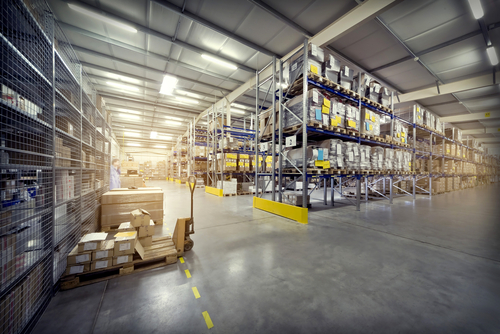As global taste for rapid delivery increases, so too does the pressure on those facilitating logistics internationally. Regardless of the scale of operation, inventory management is one of the most frequently reported pain points in the warehouse and logistics industries. What was once manageable – or at least tolerable – and done manually, now requires a distinct minimum level of technology to run. Without intelligent databases, around the clock connectivity and smart, ruggedised devices, stock would get lost, workers confused, and management baffled without a live account of operations.
The solution is to invest time into looking at what the next wave of technology will bring and how it can plug into existing systems – just don’t get put off by jargon or futuristic titles. Nobody should let unfamiliarity scare them away from new technologies.
Augmented Reality
Augmented Reality (AR) is a great example of a not-for-me sounding technology proving helpful in the warehouse. While it might sound scary and new, it is neither. Far from its famous consumer applications, the technology holds a great deal of potential for businesses. In the recent Zebra Technologies Future of Field Operations Vision Study, 29 percent of those surveyed agreed AR will be one of the most disruptive technologies to hit enterprise field operations.
Perfect for the hustle and bustle of a warehouse, AR means every object can be enriched with additional and valuable information – effectively an expansion of physical reality via added layers of computer-generated information. Data in this context could be any kind of virtual object or content, including text, graphics, video or GPS data.
Already, AR is being used in warehouses to locate, pick and pack products more efficiently and guide workers to make the next best course of action. Furthermore, staff training costs are being cut by utilising AR as mapping services, reduce the need to drill new starters or holiday workers on the layout while also highlighting optimal routes in a warehouse.
Currently, the technology is most widely used on mobile computers and tablets, however increasingly people are looking at how smart glasses can be integrated. Perhaps a little way off for many businesses, the proliferation of wearable tech is inevitable. By using smart glasses, employees can navigate warehouses, manage stock levels and quickly define tasks completely hands-free. This is a vast improvement over the commonly used process where order pickers use a piece of paper or hand scanner to hand-select products and place them on carts.
Further down the supply chain, those navigating delivery to customers can save time and money by nearly cutting the time spent on last-mile delivery in half. According to a DHL report , drivers spend 40 – 60 percent of their day searching inside their own truck for the correct boxes to deliver next. Instead of having to remember how their truck was loaded that morning, AR is used to identify, tag, sequence, and locate every parcel.
Intelligent Tags and Labels
Organisations working in the warehouse and transport & logistics space are also working with intelligent tags and labels to bring order to operations. One of the most effective of these is radio-frequency identification (RFID) labels.
RFID labels emit radio waves that can be captured by a reader from a significant distance, without seeking out a printed label. This makes them completely paperless and takes the process of “scanning” to the next level. Indeed, great examples of the application of RFID technology already exist, with some warehouses employing the use of automated drones to effectively collect data from hard to reach spots or even locating technologies for yard management beyond the warehouse to automate parking assignments and truck scheduling.
If organisations are going keep up with industry pace, they must address every link in their supply chain including what is most probably the biggest and most important: their warehouse. If they can look at their warehouse operations and not be afraid to investigate where better technology could help future proof their processes, they stand a much greater chance of weathering the ever-demanding storm.










Discussion about this post